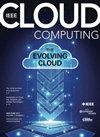雾计算开箱即用的FogDEFT框架:一个案例研究
Q1 Computer Science
引用次数: 2
摘要
在物联网应用领域,雾计算是克服云计算局限性的关键技术。服务放置在最近的雾设备中,大大减少了网络延迟、连接性和可靠性问题,并提供了实时功能作为扩展,在大型传感器网络的情况下降低了能耗和网络开销。然而,雾计算的采用率与其提出的性能不成比例,因为资源限制、异构性和缺乏标准化,需要特定于应用程序的专有解决方案。因此,我们提出了一个框架,该框架扩展了OASIS -云应用拓扑和编排规范(TOSCA)标准,用于对物联网应用进行建模,并使用容器化技术来处理平台独立性和互操作性,从而在雾设备之间创建无缝协调和合作。该框架抽象了所有的异构性和复杂性,并提供了一个用户友好的范例来建模和动态部署雾服务,按需,在运行中,从远程系统。最后以雾样机上气候控制服务的动态部署为例,对该框架进行了验证。本文章由计算机程序翻译,如有差异,请以英文原文为准。
Fog Computing out of the Box with FogDEFT Framework: A Case Study
Fog computing is the key technology to overcome the limitation of cloud computing in the domain of IoT applications. The service placement in the nearest fog devices drastically reduces the network delay, connectivity, and reliability issues and delivers real-time capabilities as an extension, reduces energy consumption and network overhead in the case of large sensor networks. However, the adoption rate of fog computing is not in proportion with the performance it proposes because, resource constraints, heterogeneity, and lack of standardization, require application-specific proprietary solutions. Therefore, we propose a framework that extends OASIS - Topology and Orchestration Specification for Cloud Applications (TOSCA) standard for modeling IoT applications and uses containerization technology to handle platform independence and interoperability, creating seamless coordination and cooperation across fog devices. The framework abstracts all the heterogeneity and complexities and offers a user-friendly paradigm to model and dynamically deploy fog services, on-demand, on the fly, from a remote system. The framework is demonstrated with a case study of the dynamic deployment of climate control service on the fog prototype.
求助全文
通过发布文献求助,成功后即可免费获取论文全文。
去求助
来源期刊

IEEE Cloud Computing
Computer Science-Computer Networks and Communications
CiteScore
11.20
自引率
0.00%
发文量
0
期刊介绍:
Cessation.
IEEE Cloud Computing is committed to the timely publication of peer-reviewed articles that provide innovative research ideas, applications results, and case studies in all areas of cloud computing. Topics relating to novel theory, algorithms, performance analyses and applications of techniques are covered. More specifically: Cloud software, Cloud security, Trade-offs between privacy and utility of cloud, Cloud in the business environment, Cloud economics, Cloud governance, Migrating to the cloud, Cloud standards, Development tools, Backup and recovery, Interoperability, Applications management, Data analytics, Communications protocols, Mobile cloud, Private clouds, Liability issues for data loss on clouds, Data integration, Big data, Cloud education, Cloud skill sets, Cloud energy consumption, The architecture of cloud computing, Applications in commerce, education, and industry, Infrastructure as a Service (IaaS), Platform as a Service (PaaS), Software as a Service (SaaS), Business Process as a Service (BPaaS)
 求助内容:
求助内容: 应助结果提醒方式:
应助结果提醒方式:


